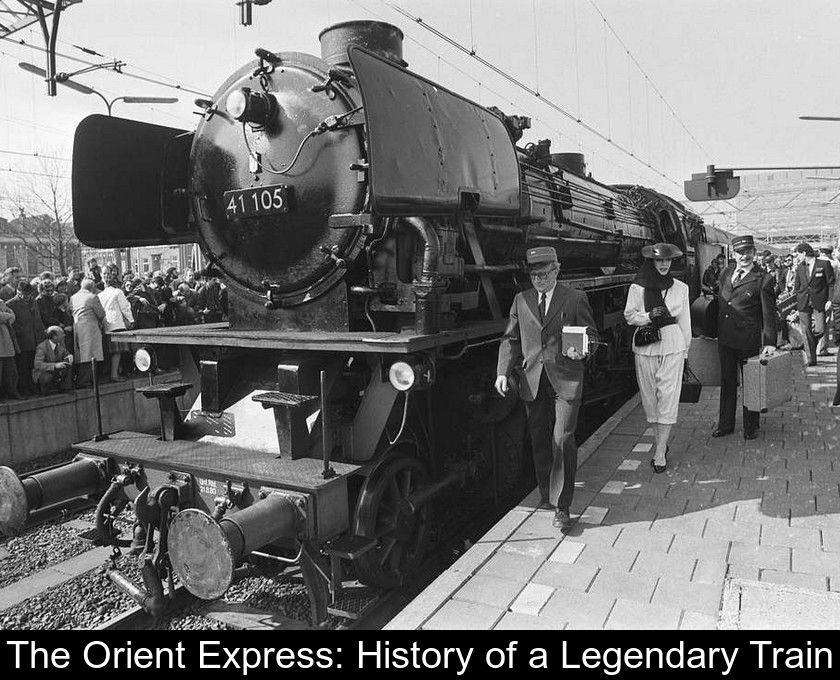The Orient Express: History Of A Legendary Train
The Orient-Express is undoubtedly the most famous train in the history of rail travel. One hundred and forty years after its inaugural journey, it continues to inspire the dreams of travelers from around the world. We invite you to trace the saga of this luxury train, which was once the preferred mode of transport for European royalty.
1883: the commissioning of the Orient Express
The Orient Express was inaugurated on June 5, 1883 under the name Express d'Orient.
Originally, it ran twice a week on what was then the world's first international railway.
It provided a connection between Paris (Paris-Est station) and Constantinople (now Istanbul), passing through Strasbourg, Munich, Vienna, and other European cities.
This train did not just cross Europe; it also offered its passengers a luxurious setting that helped forge its legend.
The interwar period: the golden age of the Orient Express
At the end of the 19th century, travelers on the Orient Express made the journey from Paris to Constantinople, a distance of 2800 km, in just 2 days and 3 nights.
In 1894, the Compagnie des wagons-lits opened several luxury hotels in Constantinople for train passengers, including the Pera Palace.
On May 30, 1906, the Simplon Tunnel was inaugurated, linking Switzerland to Italy and bringing Paris closer to Venice. From then on, the Orient Express directly connected Paris to Constantinople via Venice and Trieste.
From 1919, the train, renamed "Simplon-Orient-Express," linked Calais-Maritime and Paris-Gare du Nord, as well as Paris-Gare de Lyon, to Istanbul and Athens via Lausanne, Milan, Verona, Venice, Trieste, Zagreb, Belgrade, Sofia, and Thessaloniki. The action of Agatha Christie's famous novel Murder on the Orient Express is set on this train, traveling from Istanbul to Calais.
Note: This mythical train has inspired many writers, such as Agatha Christie, Paul Morand, and Paul Valéry. Ian Fleming, the creator of James Bond, used it as a setting in the novel From Russia with Love.
The Orient Express experienced its golden age in the interwar period. In the 1920s and 1930s, it was the preferred mode of transport for European royalty, aristocrats, and celebrities. It was then nicknamed "The Train of Kings, the King of Trains."
This mythical train notably hosted on board Coco Chanel and Sigmund Freud, as well as Josephine Baker and the spy Mata-Hari. Passengers worthy of the most prestigious of trains...
Decline and Revival of the Orient Express
World War II abruptly halted the rise of the Orient-Express, and the advent of air travel began its decline. Regular service to Istanbul and Athens ceased in 1977 due to increasing competition from airplanes.
However, in 1982, a British entrepreneur, Sir James Sherwood, decided to revive the legend of the Orient Express. He reconstituted a new luxury train with restored original equipment.
This train, named the Venice-Simplon-Orient-Express and managed by a private company, still operates today, connecting Boulogne-sur-Mer - Calais - Venice via Paris, Innsbruck, or Vienna, sometimes extending to Istanbul. With its blue and gold cars, this train offers a legendary journey through the heart of Europe (see the official website below).
In 2003, the Compagnie des Wagons-Lits also restored seven cars from its historical heritage and put them back into service in a train called the Pullman Orient-Express. This train primarily offers dinner journeys departing from Paris.
More recently, the Orient Express company entrusted architect Maxime d’Angeac with the mission of reviving this legendary train by reinterpreting the decor of the Nostalgie-Istanbul-Orient-Express. The luxurious cars inspired by the 1920s and designed in collaboration with the best French artisans are expected to be unveiled in 2025.





